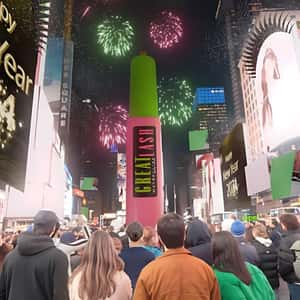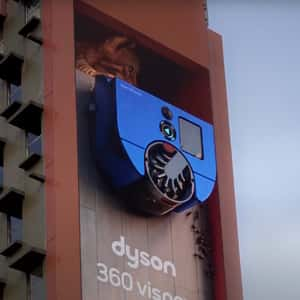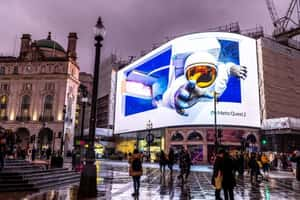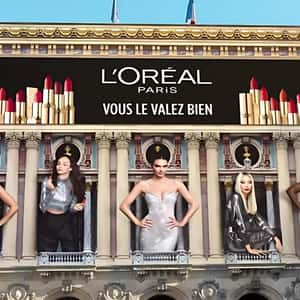2025 Is a Turning Point for DOOH — Here's Why It Matters
2025 is shaping up to be THE year for DOOH. Here are the trends & standout examples everybody is talking about.
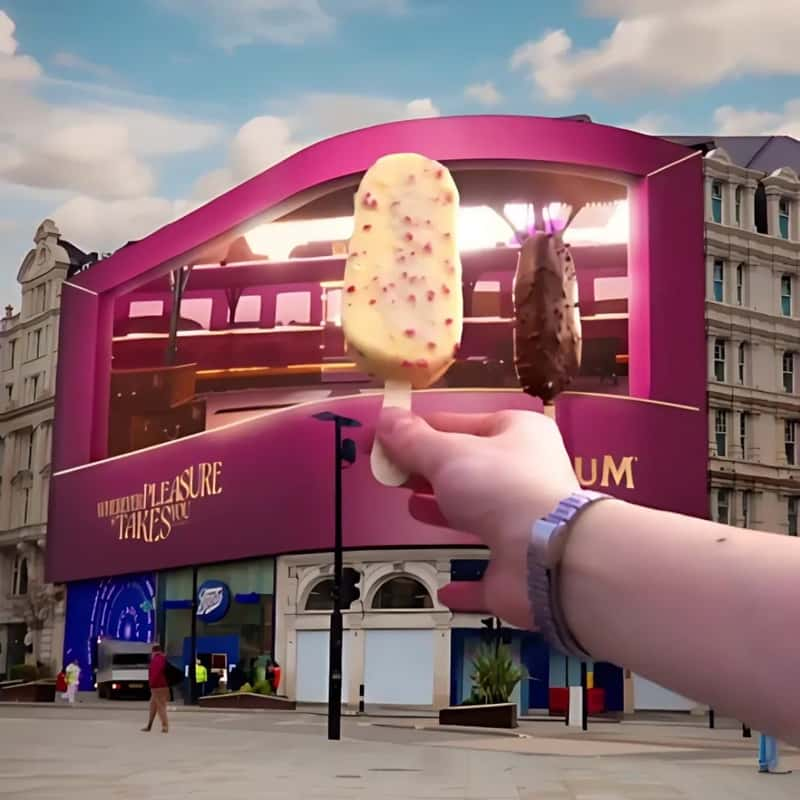
Digital Out-of-Home is everywhere in 2025, and it’s not slowing down anytime soon.
Just this year, global ad spend is projected to hit $992 billion, with digital out-of-home advertising and other digital formats rising 7.9% to $678.7 billion. Brands are actively looking for fresh, creative formats, and DOOH advertising is stepping up. With programmatic formats becoming standard, advertisers can now target with real-time triggers and produce high-impact, measurable impressions in public spaces.
While everyone spends hours on social media everyday, DOOH or OOH is still the best way to get attention from people — especially with formats like 3D billboards.
In this article, we’ll look at what’s driving the shift, what tools are making it possible, and the best DOOH ads we’ve seen so far in 2025.
Who and What is Leading DOOH this year
DOOH’s strength lies in its public reach, flexible targeting, and ability to adapt in real time. In 2025, a few key developments are pushing it even further, from better programmatic tools to more creative formats and smarter ways to connect with digital platforms.
1. Advancements in the tech behind programmatic DOOH
Brands can now plan DOOH advertising more efficiently with smarter, data-driven tools. Programmatic technology now makes it easier to target the right people with the right message — based on time, location, weather, and other real-time data.
Platforms like Ada and Atlas for example, allows brands to run dynamic DOOH ads that respond to real-world conditions.
And it works: 96% of people say they’re more likely to buy when ads feel personalized, and 77% say they’re influenced by relevant product recommendations.
2. 3D Billboard
3D billboards are digital screens (usually large ones on buildings) that show specially designed videos which look like they’re popping out of the screen — even though the surface is completely flat.
Like this famous cat video on a 3D billboard.
To create this effect, designers use a trick called anamorphosis: they render the animation from a very specific viewing angle, so when you’re standing in the right spot (usually across the street), the image lines up perfectly and your brain sees it in three dimensions. Think of it like a 3D illusion or optical trick — but done with motion graphics and light.
It’s not actually 3D like a hologram — it just feels 3D because of how our eyes and brain interpret perspective, shadows, and depth.
It’s also super shareable, making them a smart choice for brands looking to extend reach beyond the street. When people stop to film a floating cup breaking out of a screen or a robot vacuum cleaning up on a building facade, those clips usually end up online, giving the ad way more reach than the screen it was shown on.
That mix of creative tech and public space makes it one of the most talked-about formats in DOOH trends 2025.
3. Social virality loop
In 2025, brands are treating DOOH as more than just a screen on the street, they’re using it as content. Ads that are interactive, 3D, or unexpected tend to get noticed, filmed, and shared on social media.
That’s the loop: a DOOH activation catches attention in public, someone records it, and it spreads online. And this pairing is effective: customers exposed to digital out-of-home advertising 2025 are 38% more likely to engage with a brand on their phones, whether that’s scanning a QR code, visiting a site, or downloading an app.
This kind of offline-to-online reach helps campaigns go further without needing extra ad spend. It’s one of the reasons DOOH advertising is becoming a regular part of integrated campaigns this year.
Top 8 DOOH Examples of 2025 (this far)
DOOH is evolving fast in 2025, and brands are using it in sharper, more intentional ways.
These examples show how digital out-of-home screens are being used not just for visibility, but for timely, well-placed impact.
1. Magnum by Pleasure Express (UK)
This first DOOH example is a solid case of the offline-to-online loop driving DOOH this year. Magnum’s “Pleasure Express” campaign aimed to launch two new flavors, in a fun, immersive way that captured the brand’s identity: indulgence and “pleasure worth waiting for.”
To deliver on that, they ran a 30-second 3D ad across 324 UK screens, including standout DeepScreen sites in London, Manchester, Birmingham, and Liverpool. They backed it up with a real-life sampling event at Piccadilly and turned the OOH activation into a short FOOH ad for socials, making sure the campaign lived across physical spaces and online feeds.
2. Gladiator II by DOOH.com, Wavemaker, Ocean Outdoor, Mindshare, GroupM OOH, Starcom, and Cheil (UK)
To promote Gladiator II, Paramount partnered with Samsung, LEGO, TK Maxx, and Trainline for a full-on branded takeover of Piccadilly Circus and other major locations.
Each brand reimagined their ad in a Roman theme: Samsung showed a gladiator flinching as a rhino charges out of its QLED screen. Trainline swapped a train for a horse and chariot. TK Maxx became “TK Maxximus,” and LEGO asked if Rome can be built in a day.
All of it ran across major digital out-of-home sites, including a 3D execution at Piccadilly Lights, and was supported by live stunts around the city with soldiers, gladiators, and chariots.
The campaign delivered by getting big brands to step out of their usual branding and commit to the Gladiator II theme.
3. 3D Holographic Experience Truck by FLO, HYPERVSN, and Firefly (US)
This next campaign builds on the 3D trend we’ve been seeing across DOOH advertising in the US in 2025. FLO Advertising, HYPERVSN, and Firefly teamed up to launch the first-ever 3D Holographic Experience Truck, starting on the Las Vegas Strip and expanding to other major cities.
The goal: bring immersive 3D visuals directly to people on the street, instead of keeping them locked to fixed billboards. The truck uses HYPERVSN’s tech to project mid-air holograms, mounted on FLO’s mobile billboards and distributed through Firefly’s national network. It’s built for brand activations, launches, and live events – anytime a brand wants to show up and stand out.
This campaign was a fully mobile, fully customizable format that gave advertisers a new way to create real-world impact. It shows how far digital out-of-home advertising can go when storytelling, tech, and mobility come together in one format.
4. Netflix, Squid Game Season 3 (Korea)
Next on our list is another example of 3D DOOH, this time promoting the final season of Squid Game, which dropped in June 2025. Because the series is a global phenomenon, this ad was placed on a 3D billboard in one of Korea’s busiest spots: Shinsegae Square.
The ad opens with a wrapped present that unboxes itself on screen. Inside, the Front Man appears and picks player number 456: the show’s main character. The camera then pans to two children spinning a jump rope that pops out of the screen.
Then, it cuts to the iconic golden piggy bank, which bursts open and releases golden bills flying forward. One by one, the players from the show appear, ending with a reminder that season 3 is now streaming.
This DOOH ad leans into storytelling and show imagery, using 3D visuals to build hype around the final chapter of a series millions have followed since day one.
5. Oreo by SuperHeroes (Netherlands)
This next ad is another promotional campaign for a movie. Or at least that’s what it looked like at first. This DOOH campaign ran in a train station and started with a fake horror poster of a creepy clown, placed between two OREO ads.
One of the OREO posters had a warning that said, “The new OREO cookies can’t be resisted.” Then in the next screen, the clown suddenly breaks character, reaches over, and grabs a cookie from the nearby ad.
It’s a simple but clever way to surprise people walking by — and a fun reminder of how DOOH can blur lines between ads and stories to keep things interesting.
6. Swatch by XK studio
This DOOH ad for Swatch is all about motion, color, and showing off the brand’s wide range of styles. Displayed on a 3D billboard, it opens with a blue Swatch watch spinning against a matching blue background. Then comes an orange one, with the backdrop shifting to match, followed by more designs in blue, purple, and orange, some even twisting together on-screen.
Each watch enters with its own flair, including one with a neon light trail and others appearing in pairs or quick succession. All of it plays out on a 3D digital billboard built to make the watches look like they’re popping out of the screen, turning a standard product showcase into something way more dynamic.
7. Samsung (Malaysia)
This DOOH campaign from Samsung in Malaysia is a great reminder that storytelling can go far, especially when you have not just one, but two 3D billboards to play with.
In this ad, two screens placed across the street from each other show a heartwarming animated scene. On one side, two dads in Santa hats wave to passersby before turning to face the opposite screen, where their kids appear waving back.
The two groups exchange holiday gifts, smartwatches for the dads, smartphones for the kids, then reunite on a single screen to snap a selfie. A countdown begins in the other billboard, ending with a firework display and a festive message: “Samsung celebrates with you the Season of Gifting.”
Using two billboards into one cohesive experience, this campaign clearly shows how DOOH can deliver emotional, immersive storytelling across physical space.
8. McDonalds by BILLBOARDSFACTORY (Argentina)
Our last example comes from Argentina, where a vertical DOOH screen inside a mall is used for multiple 3D-style ads, but for this list, we’re focusing on the one made for McDonald’s.
The ad starts with the McDonald’s logo at the top and fries slowly disappearing. A drone carrying a Happy Meal then appears, flying down as if coming out of the screen. As it rises again, the fries start to refill the box until the screen is full.
It’s a quick, straightforward use of 3D DOOH that adds movement and a bit of fun to a familiar image. So expect to see more brands using these kinds of simple yet snappy visual ideas in malls, transit hubs, and other indoor spaces where vertical screens are common. Not every DOOH ad needs to be huge or complex to work, sometimes a small moment is enough to catch someone passing by.
